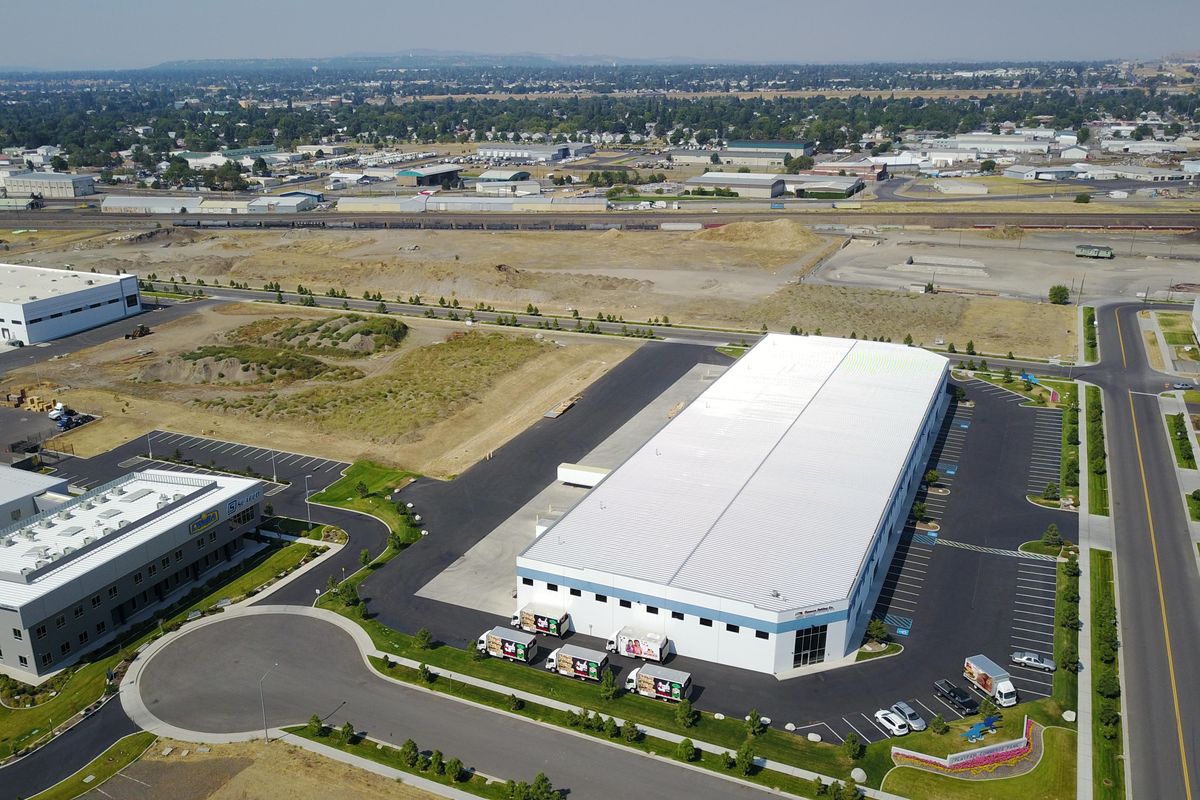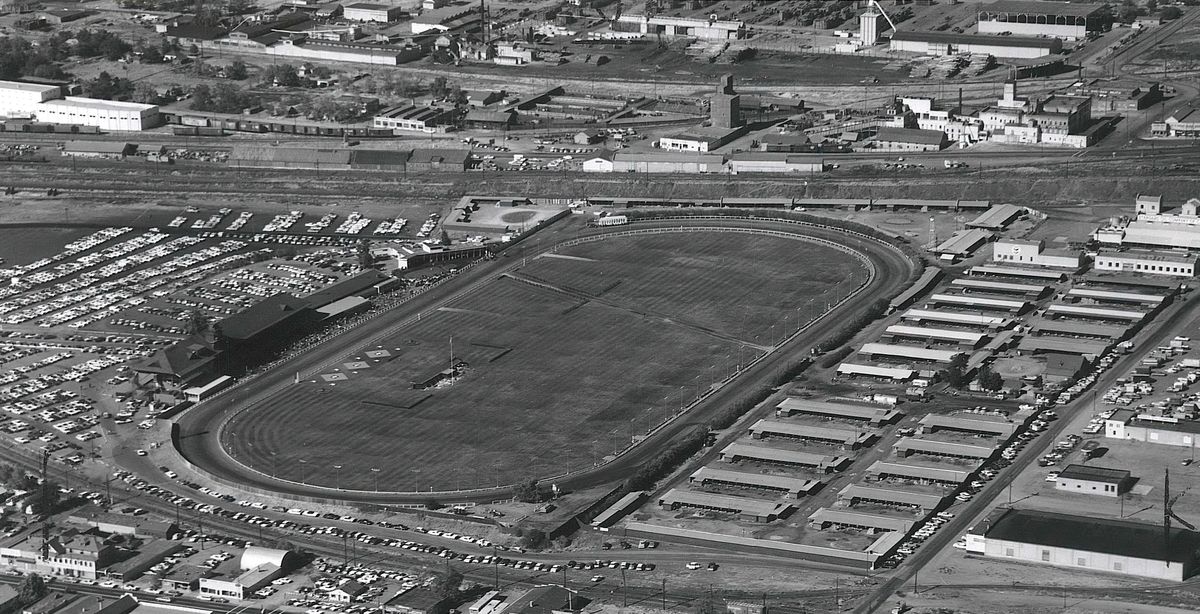Then and now: Playfair race track redevelopment
2017 - In what was once Playfair horse race track, the Playfair Commerce Park is taking shape. The development is owned by businessman Larry Stone, who also owns SCAFCO, a manufacturer of steel building materials, which has its headquarters at left in the photo. The venerable race track had its last race in 2000 and sat dormant for several years. (Jesse Tinsley / The Spokesman-Review)
The first horse racing track in the United States was built in 1665 in New York, and more than 300 were constructed over the next 200-plus years. In the 1890s, a wave of anti-gambling sentiment shook the horse racing establishment.
Bookmaking was banned and pari-mutuel betting was adopted. That meant all bets were placed in a pool, and after the track took its commission, the remaining pool of money was shared among winners.
Spokane’s Playfair Race Course, started in 1901 when the land was also the county fairgrounds, was a modest operation compared to glamorous venues in California, Kentucky and New York.
Although the fairgrounds moved to a site bounded by Havana Street and Broadway Avenue around 1935, Playfair continued to provide many hours of enjoyment to Spokane racing fans who accessed the land – bounded on three sides by railroad tracks – using an underpass off Main Street and Altamont.
The track struggled through the 1990s, partly because of the proliferation of other gambling options, such as card rooms, bingo halls, casinos and the lottery. The last race at the track was in December 2000.
The city of Spokane purchased Playfair in 2004, possibly for a new sewage plant. But the plant went elsewhere and the undeveloped land passed into private hands in 2014.
One of businessman Larry Stone’s companies is now overseeing the redevelopment of the land as Playfair Commerce Park. Stone also owns SCAFCO, a manufacturer of steel building studs and other construction materials with headquarters at the Playfair site.
The underpass at Altamont was closed when Playfair ended its run, complicating access to the site. The developers went to court and got it reopened. But at just over 11 feet, it’s too low to allow large trucks through.
Recently, Stone’s company privately funded the rebuilding of Ferry Street as an arterial through the development. Commercial trucks can now get into and out of the commerce park without going through the Altamont underpass. At the ribbon cutting for the street project July 11, Stone told The Spokesman-Review, “I am proud of what we are doing.”

